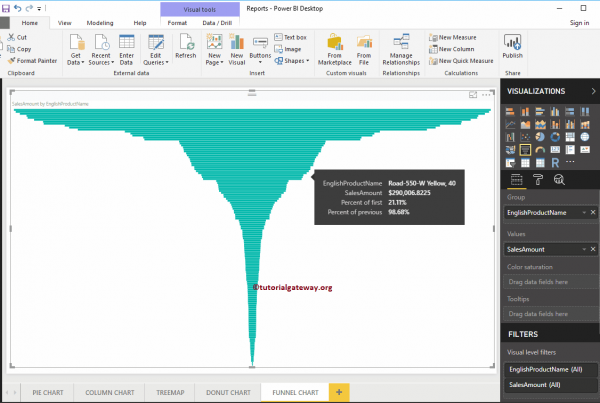The Rich cards They are a specific content display option in Google mobile search. A webmaster can select this type of presentation by marking the content such as recipes and movies in the JSON-LD format. The content will be displayed in a visual format that improves the experience and interaction of the cell phone user. Rich cards can be seen as an evolution of rich snippets and build on the vocabulary of Schema.org. In this way, they are a semantic markup that gives mobile users a first visual impression of the content.
General information
Google is often testing new display variations in its search. In the context of cell phone search and the increasing number of mobile device users, the rich cards They are a development that complements Google's reorientation. The motto is "cell phone first." Working with Accelerated Mobile Pages (AMP), the alternatives for displaying the rich cards can be expanded. Today they are displayed in a Facebook carousel format. The rich visual format can be easily controlled by scrolling and swiping so that images and content can be easily viewed on mobile devices. Rich cards are introduced with a focus on the cell phone user experience that can be enhanced with technology like AMP or cell phone optimization.[1].
Webmasters and site owners have the ability to deliver their content in new ways with the rich cards and push certain target groups due to the modified display format. For example, to younger target groups who show a high affinity for mobile devices. Until 2016, the appropriate markup was only available for recipes and movies and only for the English version of Google. Common development tools, such as detailed documentation for structured data, an API connection, and a structured data testing tool, are available for onboarding. rich cards[2]. This is to support webmasters and operators with the implementation. It also includes the incorporation of performance monitoring.
Operation
The rich cards they are integrated using a JavaScript notation that uses the recommended JSON-LD format to be able to automatically process them after the markup by means of linked data and display them in the Google mobile results lists[3].
<script type="application/ld+json">The rich cards code is written here.</script>
In a recipe, for example, the metadata follows the context of Schema.org to specify the vocabulary used, as well as information on copyrights, descriptions, and reviews. The beginning of a rich card might look like this:
<script type="application/ld+json">{
"@context": "http://schema.org/",
"@type": "Recipe",
"name": "Perfect Apple Pie",
"author": "Gin Blanco",
"image": "http://images.edge-generalmills.com/56459281-6fe6-4d9d-984f-385c9488d824.jpg",
"description": "A classic apple pie takes a shortcut with easy Pillsbury® unroll-fill refrigerated pie crust.",
"aggregateRating": {
"@type": "AggregateRating",
"ratingValue": "4.5",
"reviewCount": "276",
"bestRating": "5",
"worstRating": "1"
},</script>
A comma separates the code blocks and the data and attribute fields from the bracket group. Then many different fields and attributes can be used, including, for example, nutrition information, ingredients (recipeIngredient), and a guide (recipeInstructions). After the comma, other data fields are possible:
"prepTime": "PT30M", "totalTime": "PT3H", "recipeYield": "8", "nutrition": {"@type": "NutritionInformation", "servingSize": "1 medium slice", "calories ":" 230 calories "," fatContent ":" 1 g "," carbohydrateContent ":" 43 g "," cholesterolContent ":" 0 mg "," fiberContent ":" 1 g "," proteinContent ":" 1 g "," saturatedFatContent ":" 2 ½ g "," servingSize ":" 1 Serving "," sodiumContent ":" 200 mg "," sugarContent ":" 27 g "," transFatContent ":" 0 g "}," recipeIngredient ": [" 1 box Pillsbury ™ refrigerated pie crusts, softened as directed on box "," 6 cups thinly sliced, peeled apples (6 medium) "," 3/4 cup sugar "," 2 tablespoons all-purpose flour " , "3/4 teaspoon ground cinnamon", "1/4 teaspoon salt", "1/8 teaspoon ground nutmeg", "1 tablespoon lemon juice"], "recipeInstructions": ["First step", "Second step", "Third step"]}
Other fields and properties are available to mark rich cards for movies.
Practical relevance
- Google recommends that webmasters explore the possible data fields and attributes that can be flagged using the JSON-LD format and that are supported by Google.
- A preview can be seen in the structured data testing tool once a URL using JSON-LD source code has been referenced. It is feasible to represent rich cards from a URL or from different URLs in carousel format.
- You can find out if a file from rich cards it is valid with the structured data testing tool. Represents the rich cards such that all selected data fields and markups are output and all warnings and errors are displayed. Validity is a prerequisite for rich cards show up in SERPs.
- You can get information about the rich cards and how they are indexed in the Google Search Console. If there are any errors, they are linked directly to the testing tool, so they can be corrected.
- At the same time, Google recommends that you create a sitemap for all flagged content. Therefore, they can be more easily indexed by Google.[4].
The performance values for the various rich cards They must be provided in the Rich Results tab of the Search Console, for example click-through rate and impressions. How they affect rich card on the performance of mobile devices, you can see in these reports[5].
Relevance for SEO
The rich cards they are another step towards a semantic web. Due to the fact that they are based on rich snippets, the above formats are not redundant and can still be used. This is a significant advantage of JSON-LD formats that are compatible with RDFa formats, for example. For providers of certain types of content, the rich cards they are a way to attract the attention of the potential customer through mobile SERPs. Today, recipe websites, cooking and baking instructions, and movie review sites have this option. More content formats are expected to emerge in the not too distant future. Google itself suggests that the technical environment will continue to evolve for rich cards.
References
Web Links
- Google forum for structured data
- Background information on rich cards
- Documentation for structured data
- Search functions
- Google test tool






